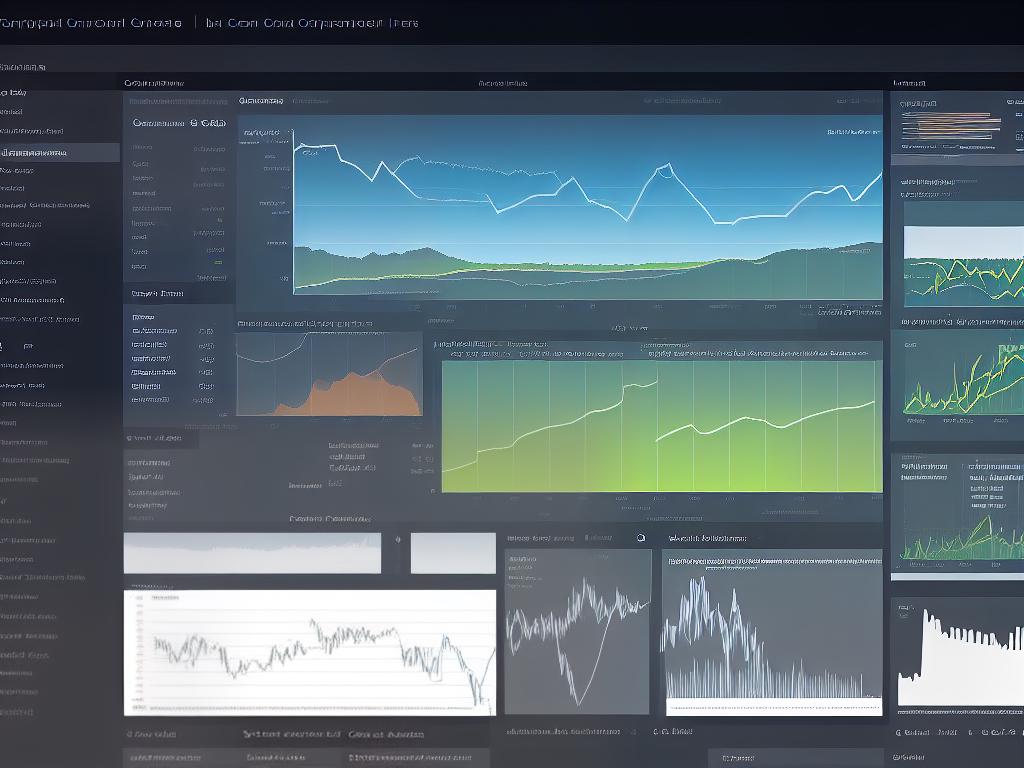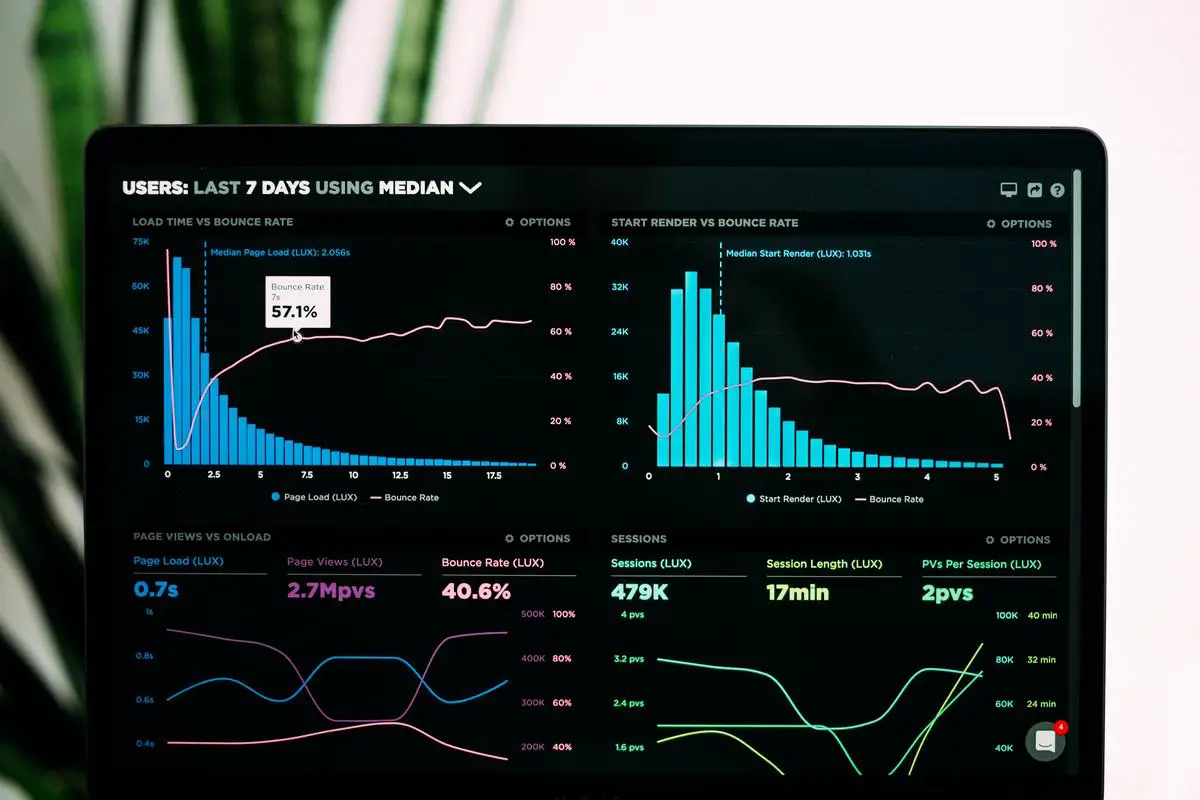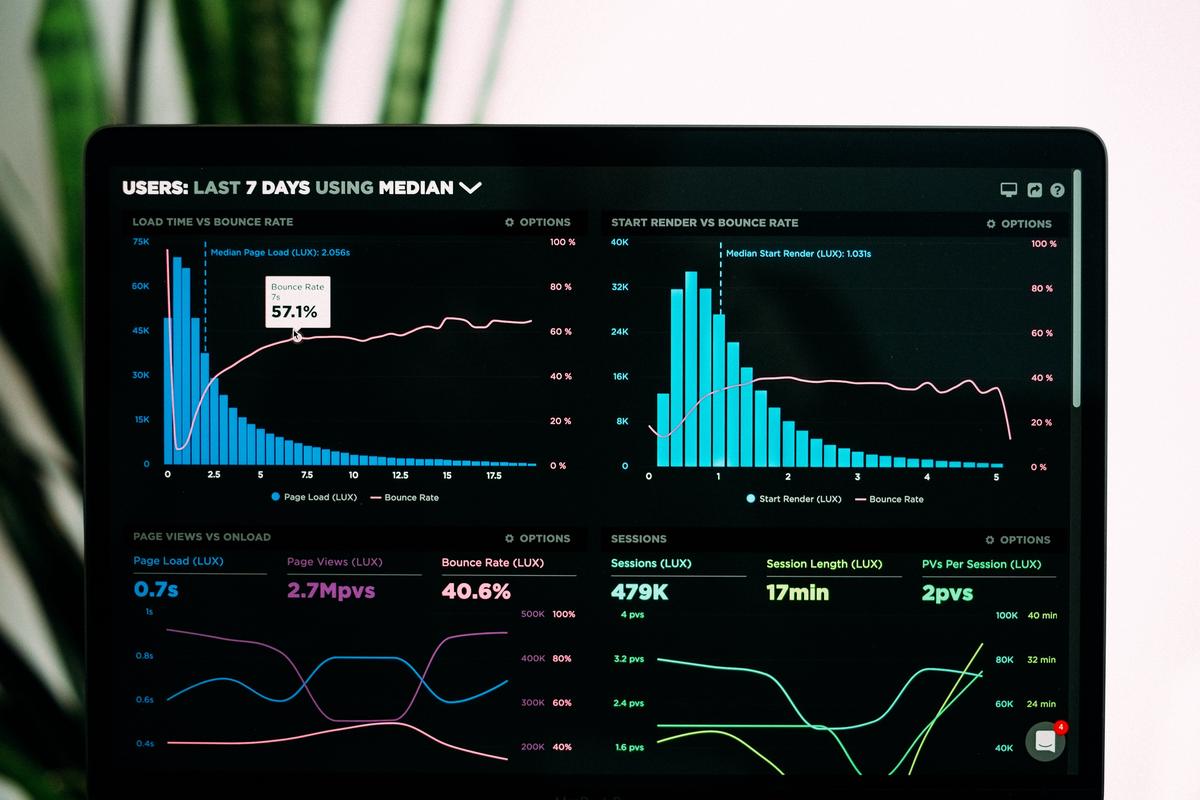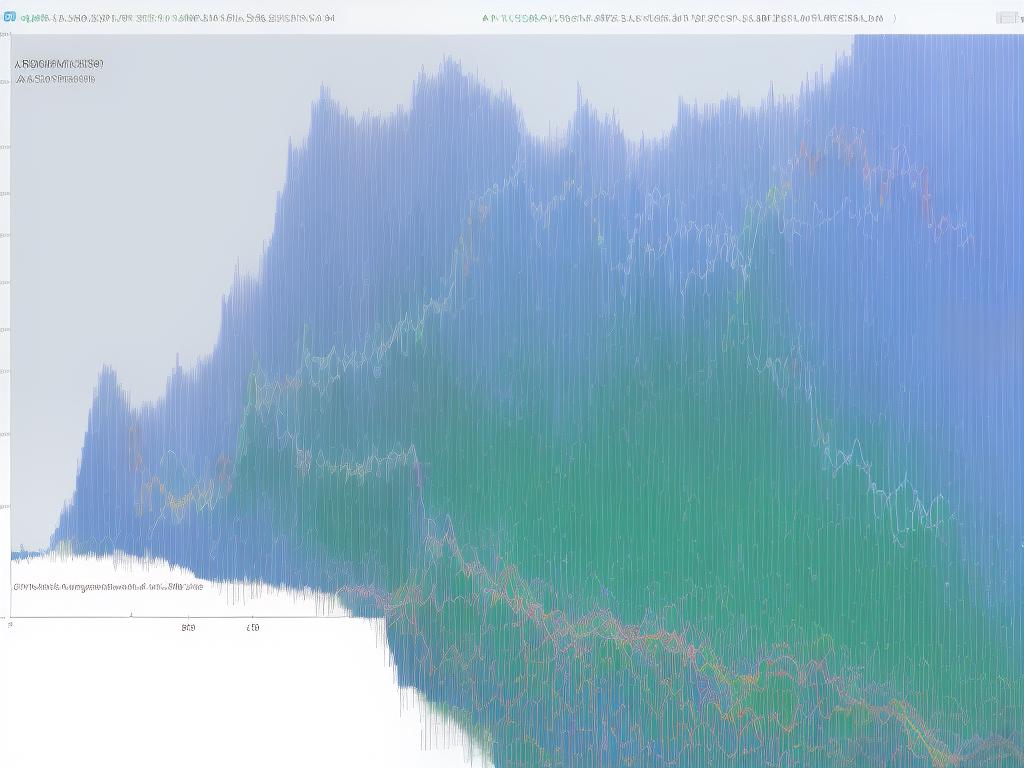In the rapidly evolving technological landscape of today’s business world, understanding and leveraging the power of data stands as a critical factor in driving strategic growth. One of the groundbreaking tools in this area is Google’s latest release – Google Analytics 4 (GA4). This latest upgrade revolutionizes data collection, interpretation, and utility, and is playing a pivotal role in shaping business strategies. A major stride within GA4 is the introduction of predictive analytics. Evidently, predictive analytics, with its data-driven insights, empowers enterprises to visualize and strategize the future. This document aims to navigate you through the intricate aspects of GA4 and its predictive analytics prowess, its applicability in business settings, and the exciting potential this evolution brings.
Understanding Google Analytics 4 (GA4)
Understanding Google Analytics 4 (GA4)
Google Analytics 4 (GA4) represents the latest advancement in data analysis software provided by Google. It presents a radical overhaul of the older versions, deploying AI-driven insights, cross-platform tracking, improved data controls, and advanced reporting systems. These features are instrumental in understanding user behaviors across multiple platforms and devices, helping businesses to better strategize their marketing and sales approaches.
Main Features of GA4
GA4 incorporates several new features that significantly widen its analytical capacity as compared to its predecessors. With an emphasis on user privacy and cross-device data analysis, GA4 allows businesses to better track user interactions across apps and websites.
One of the standout features of GA4 is the AI-driven insights. Employing advanced artificial intelligence algorithms, GA4 offers predictive metrics that can identify trends from the data, forecast future behaviors, and even suggest recommendations to enhance users’ experiences. This feature propels GA4 to the forefront of data-driven decision making.
Another major upgrade is the life-cycle reporting feature, which offers insights into the user’s journey right from acquisition, to engagement and retention. GA4 maintains track of user behaviors across applications and websites, making it easier for businesses to measure the effectiveness of their marketing strategies.
Benefits of GA4 in Modern Business Strategies
In the current digital age where data is considered the gold of the digital world, GA4 provides businesses with valuable insights into their customer behaviors and patterns. Global businesses manage to scale and grow based on strategic decisions derived from these insights.
By capturing and analyzing customer behaviors across various digital platforms, GA4 helps businesses to refine their marketing strategies, enhance customer experiences, and ultimately drive customer retention and loyalty. With the predictive analytics feature, businesses can even anticipate future customer behaviors, preferences, and trends, and proactively strategize their marketing and sales efforts.
GA4 Revolutionizing Data Collection and Utilization: Predictive Analytics
One of the biggest step-ups of GA4 is its predictive analytics feature. Using advanced AI algorithms, GA4 can predict future user behaviors based on historical data. This capability stretches beyond just identifying trends to offering potential solutions to business queries, enhancing customer engagement, and bolstering growth strategies.
Predictive analytics allows businesses to target customers based on their predicted future behaviors, fostering a much more personalized and effective marketing approach. Furthermore, with privacy laws tightening across the globe, GA4 predictive analytics enhances the accuracy of predictions while adhering to privacy rules, providing businesses an edge over their competitors.
Google Analytics 4 (GA4) is proving to be an invaluable asset for modern businesses, providing detailed insights that help navigate complex data landscapes. With its advanced toolset and multitude of features, GA4 is instrumental in crafting and enhancing data-driven decision-making processes within a business context.

Introduction to Predictive Analytics
Delving Deeper into Predictive Analytics: The Cornerstone of Data-Powered Strategies
This advanced computation arena, known as predictive analytics, employs techniques such as artificial intelligence, machine learning, and statistical modelling to make educated forecasts about future events. It accomplishes this by sifting through both current and historic sets of data to project potential future trends, behaviors, and activities. The ultimate objective is beyond simply understanding what has occurred – the goal is to present a well-founded assessment of what is likely to unfold in the future. This key functionality forms an integral part of what sets GA4 apart as a powerful tool for businesses.
Understanding GA4 Predictive Analytics: Revolutionizing Business Tactics
Google Analytics 4 (GA4) Predictive Analytics takes the functionalities of predictive analytics a step higher. It utilizes the potent capabilities of Google’s machine-learning algorithms to forecast user behaviors based on past and current data trends.
GA4 predictive analytics is revolutionary in ways that it can project potential high-value customers and user churn probability. It calculates the likelihood of a customer making a purchase within the next seven days or whether they will drop out soon. This highly valuable information enables businesses to strategize their marketing move more effectively and efficiently.
Predictive analytics within GA4 should be leveraged to boost customer retention, as it offers more pointed insights into potential churning users and can help businesses personalize their engagement strategies to keep customers onboard.
Importance of Predictive Analytics in the Business Context
Predictive analytics is a significant element in the business context for a variety of reasons. Primarily, it helps organizations make more informed, data-driven decisions. Instead of relying on intuition or outdated methods, businesses can use predictive analytics to understand which strategies would yield the best results based on concrete data.
For instance, an ecommerce platform may use predictive analytics to determine which products are likely to be popular in the upcoming season, or a financial institution might use it to forecast loan defaulters and calibrate its risk management policies.
Moreover, predictive analytics helps with resource allocation. It not only identifies opportunities but also foresees potential threats. As a result, businesses can prevent losses by proactively addressing predicted downfalls.
Core Principles of Predictive Analytics
Predictive analytics fundamentally leans on three principles – data, discovery, and prediction. High-quality data is the cornerstone for any predictive model. The data, which can be collected from numerous sources like customer records, social media, and past transaction data, provides the raw material for predictive analytics.
Next comes the discovery phase. In this step, the gathered data is thoroughly analyzed to find correlations, patterns, and outliers. Companies can detect trends and identify relationships between variables during this phase.
Finally, the prediction phase takes into consideration the trends discovered, analyzes the results, and predicts future outcomes. Each of these steps is crucial when it comes to formulating a comprehensive predictive analytics strategy.
The Power of GA4 Predictive Analytics
With the impressive strides in technology, especially predictive analytics, business strategies have undergone critical transformations. GA4 predictive analytics, in particular, has revolutionized the approach to data-driven insights, removing any reliance on guesswork. This offers companies a distinct advantage in the intensely competitive, data-centric business environment of today.

Photo by lukechesser on Unsplash
Features of GA4 Predictive Analytics
Diving Deep into GA4 Predictive Analytics
The core of this transformation lies in Google Analytics 4 (GA4) and its innovative predictive analytics feature. Leveraging artificial intelligence and machine learning, this tool can accurately predict customer behavior and industry trends. It thus presents a window into future possibilities based on the analysis of existing data patterns. This aids businesses in executing informed, strategic decisions confidently.
Churn Probabilities
One of the most valuable features of GA4 predictive analytics is churn probabilities. Churn, in this context, refers to the likelihood of a customer disengaging from your site within a specific period. This feature helps identify users who are likely to churn, enabling businesses to take proactive steps to improve user engagement and reduce churn rate.
The churn probabilities feature is particularly useful for subscription-based businesses such as SaaS platforms and streaming services. By predicting customer churn, businesses can accurately identify at-risk users and develop targeted campaigns to reengage these users and reduce subscription cancellations.
Revenue Predictions
Another compelling feature of GA4 Predictive analytics is revenue predictions. This tool uses available data to predict future revenue for a particular segment of users, making it easier for businesses to plan and optimize their sales strategies.
Revenue predictions in GA4 help companies determine which users are likely to spend a specific amount over a certain period. By leveraging this information, businesses can develop personalized marketing strategies to maximize their revenue potential and enhance their overall profitability.
Artificial Intelligence Insights
GA4 predictive analytics leverages advanced algorithms and artificial intelligence (AI) to identify meaningful patterns and trends from user data. These AI insights provide in-depth analytical data, offering businesses the chance to gain an intimate understanding of their customers’ behavior and preferences.
For instance, AI insights can highlight high-performing products or services and identify how different customer segments interact with your website or application. These insights provide businesses with actionable information, enabling them to optimize their marketing efforts and enhance user experience.
Capitalizing on GA4 for Business Expansion
For promoting business growth, GA4 predictive analytics serves as an indispensable tool. It enables businesses to foresee customer patterns and behaviours, serving as the foundation for data-informed strategies that escalate user involvement, amplify customer acquisition, and boost retention.
With precise predictions of churn rates, businesses can devise strategies to reduce downsizing. Furthermore, predictions related to revenue allow companies to refine their marketing strategies, consequently elevating profitability.
Concisely, GA4 predictive analytics provides an efficient approach for businesses to remain competitive. By harnessing these advanced tools, businesses can attain valuable insights, make educated decisions, and ultimately, fuel their expansion.

Photo by lukechesser on Unsplash
Interpreting and Applying Data from GA4 Predictive Analytics
Deciphering GA4 Predictive Analytics
Google Analytics 4 (GA4) predictive analytics represents an elevated system for tracking and dissecting data that companies can exploit to examine consumer behaviour. This complex tool offers users the ability to scrutinize diverse data including internet usage patterns, purchase habits, and demographic information to create predictive frameworks. The application of these frameworks further informs the development of pivotal business tactics and decision-making processes.
Interpreting Data from GA4 Predictive Analytics
Understanding the data insights derived from GA4 predictive analytics is an essential facet of any data-driven organization. This involves studying various metrics that GA4 offers, such as predicted churn probability and projected revenue.
- Predicted churn probability represents the probability that an active user will not visit your app or website within the next seven days. High predictive churn rates may indicate a need for increased engagement strategies to retain customers.
- Projected revenue, on the other hand, offers a forecast of how much revenue a particular group of customers is likely to generate within the next 28 days. This could be critical in forming revenue targets and defining marketing budgets.
Applying Data from GA4 Predictive Analytics
The practical application of data predictions for business growth and strategies is where GA4 predictive analytics becomes a decisive tool for businesses. Examples of these applications include refining marketing strategies, developing personalized customer experiences, and managing resources efficiently.
For instance, by leveraging data on predicted churn probability, businesses can craft specialized retention marketing campaigns. These campaigns could target users with a high churn probability, offering incentives to re-engage and bringing them back to the platform.
Similarly, projected revenue data can shape budgeting and financial strategies. If GA4 predicts a significant increase in revenue from a specific customer group, businesses could allocate more resources towards marketing efforts to this group. Conversely, if a decrease in revenue is predicted, businesses can pivot and devise strategies to counter the potential drop.
Practical Examples of GA4 Predictive Analytics in Action
One impactful demonstration of GA4 Predictive Analytics in real-world situations involves an online retailer predicting their holiday season sales. By using projected revenue data, they were able to develop a targeted marketing campaign for a specific segment of customers that were anticipated to generate high revenue. This led to the creation and promotion of an exclusive holiday-themed collection that corresponded with a significant boost in sales.
A separate case is a news platform that was struggling with high churn rates. By utilizing data relating to churn probability, they were able to detect trends in user behavior that resulted in churn. Consequently, they devised a plan to present relevant content to users at key moments identified in these patterns, which successfully reduced the churn rate.
What these case studies illustrate is the instrumental role of GA4 Predictive Analytics in providing valuable data and overseeing its strategic application to achieve business objectives, thereby substantiating its position as a powerful instrument for enterprise strategy and expansion.

The Future of GA4 Predictive Analytics
GA4 Predictive Analytics: Ushering in a Data Revolution
In the realm of digital marketing and advertising, the prominence of data cannot be overstated. The demand for data and the analysis it necessitates has brought forth tools like Google Analytics 4 (GA4) Predictive Analytics. This sophisticated machine learning-powered tool examines patterns in user behavior on a website or app and forecasts ensuing actions and churn probabilities, thereby revolutionizing the way we comprehend and utilize data.
Forecasting the Future with Machine Learning
Machine learning, the core technology behind GA4 Predictive Analytics, has evolved greatly over the years. This technology uses data patterns to make predictions about future outcomes. In GA4, this means leveraging a user’s past website/app activities to predict future actions. As machine learning technology continues to improve, we can expect the accuracy of these predictions to increase—offering even more valuable insights for businesses.
GA4 Predictive Analytics: Custom-Fit for Your Business Needs
One of the current trends in predictive analytics is the move toward customizable models. GA4 offers flexibility with its models, allowing businesses to adjust the algorithms based on their specific requirements. In the future, we expect this trend to continue, with GA4 offering even more customization options. This will enable businesses to implement predictive analytics in a way that’s tailored specifically for their needs, increasing the accuracy of predictions and the effectiveness of marketing initiatives.
Artificial Intelligence: Enhancing Predictive Analytics
Artificial Intelligence (AI) and machine learning (ML) are becoming increasingly intertwined. We anticipate that future iterations of GA4 will incorporate more AI technologies. This will take predictive analytics to a new level, as AI can potentially self-learn and adapt to changes, enhancing the tool’s ability to make accurate predictions over time.
Predictive Analytics and Data Privacy
Data privacy is an increasingly pressing concern, and this extends to predictive analytics. As GA4 uses user data for its predictions, ensuring the privacy and security of this data is critical. We foresee that future developments in GA4 will likely include enhanced measures to protect user data.
Preparing Your Business for the Future
With these anticipated trends in GA4 Predictive Analytics, it’s vital for businesses to prepare themselves to leverage these changes effectively. This includes investing in upskilling employees in data analysis, increasing data quality, adapting to evolving privacy norms, and staying updated on the trends and advancements in predictive analytics. Having the foresight to adapt to these evolving technologies will put businesses at a cutting edge and aid them in gaining a competitive advantage.

With the endless advancements in technology, GA4 predictive analytics has an extraordinary scope of growth, and its ability to shape modern businesses is undeniable. The trends that lie ahead in the analytics world call for businesses to adapt and gear up for these transformations. It is not just about surviving but optimally thriving in a data-driven landscape. A thorough knowledge of GA4 predictive analytics tools, coupled with the ability to interpret and apply data insights, will play a crucial role in this process. The future of business strategy lies in the hands of predictive analytics, and its potential can only be limited by the vision to use it.

